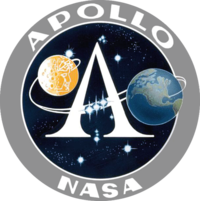The Apollo Program was a human spaceflight program undertaken by NASA during the years 1961–1975 with the goal of conducting manned moon landing missions. In 1961, President John F. Kennedy announced a goal of landing a man on the moon by the end of the decade. It was accomplished on July 20, 1969 by the landing of astronauts Neil Armstrong and Buzz Aldrin, with Michael Collins orbiting above during the Apollo 11 mission. Five other Apollo missions also landed astronauts on the Moon, the last one in 1972. These six Apollo spaceflights are the only times humans have landed on another celestial body.The Apollo program, specifically the lunar landings, is often cited as the greatest achievement in human history. Apollo was the third human spaceflight program undertaken by NASA, the space agency of the United States. It used Apollo spacecraft and Saturn launch vehicles, which were later used for the Skylab program and the joint American-Soviet Apollo-Soyuz Test Project. These later programs are thus often considered to be part of the overall Apollo program. The Apollo program included a large number of uncrewed test missions and 11 crewed missions. The 11 crewed missions include two Earth orbiting missions, two lunar orbiting missions, a lunar swingby and six Moon landing missions. The Apollo program was designed to land humans on the Moon and bring them safely back to Earth. Six of the missions -- Apollos 11, 12, 14, 15, 16 and 17 -- achieved this goal. Lunar surface experiments included soil mechanics, meteoroids, seismic, heat flow, lunar ranging, magnetic fields and solar wind experiments
![]() Click on the button and check out the updated Apollo interactive (Requires Flash Player).
Click on the button and check out the updated Apollo interactive (Requires Flash Player).
Apollo 8 was the first manned spacecraft to orbit another celestial body.
Apollos 7, which tested the Command Module, and 9, which tested both the Command Module and Lunar Module, were Earth orbiting missions. Apollos 8 and 10 tested various components while orbiting the Moon, and returned photography of the lunar surface. Apollo 13 did not land on the lunar surface due to a malfunction, but during the brief orbit around the Moon, the crew was able to collect photographs.
The goal of the program, as articulated by President Kennedy, was accomplished with only two major failures.
The first failure resulted in the deaths of three astronauts, Gus Grissom, Ed White and Roger Chaffee, in the Apollo 1 launchpad fire.
The second was an in-space explosion on Apollo 13, which badly damaged the spacecraft on the moonward leg of its journey. The three astronauts aboard narrowly escaped with their lives, thanks to the efforts of flight controllers, project engineers, backup crew members and the skills of the astronauts themselves.Apollo 17 marks the time of the last moonwalk and also the last manned mission beyond low Earth orbit.
After the last lunar landing, total funding for the Apollo program was about $19,408,134,000. The budget allocation was 34 percent of the NASA budget.
The program set major milestones in the history of human spaceflight. This program stands alone in sending manned missions beyond low Earth orbit.
From today i shall bring to you information on the Appolo Program , mission by mission
starting from Appolo 1 going till Appolo 17..






0 comments:
Post a Comment